Company Updates
Introducing Instacart Health: Delivering the Ingredients for Healthier Living
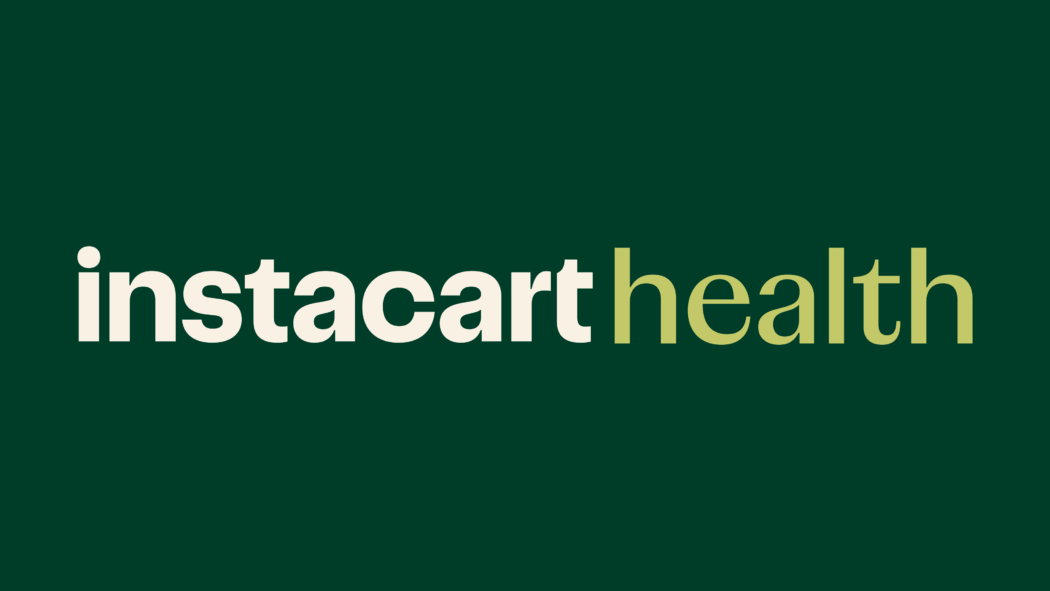
When it comes to the connection between health and nutrition, the data tells an eye-opening story. Today, more than one in 10 Americans doesn’t have reliable access to nutritious food (1), and more than 100 million people in the United States suffer from diet-related disease (2). Further, 85 percent of U.S. healthcare costs come from treating chronic diseases (3), like diabetes and hypertension, that can be caused or made worse by diets that lack key nutrients. It’s one reason why America spends more than any other country on healthcare but has lower life expectancy than other wealthy countries (4).
While these trends are sobering, we see them as a clear call to action.
As the leading online grocery technology company in North America, we’ve not only become a staple in millions of households, we’re already naturally playing a major role in people’s health. We’ve seen firsthand via independent and partner research studies that online grocery delivery helps people get access to fresh food, adopt healthier eating habits, save time, manage their budgets, and eliminate transportation and mobility barriers to nutrition. As a company at the center of people’s relationship with what they eat, we have an opportunity – and a responsibility – to do more.
That’s why today we’re announcing Instacart Health, a new initiative designed to deliver
the ingredients for healthier living.
Starting with our strong foundation in food and nutrition access, Instacart Health will turbocharge our work in this space – including product innovations, new partnerships, cutting-edge research and policy advocacy across three key themes where we believe we can make the most difference: Nutrition Security, Making Healthier Choices Easier, and Food as Medicine.
Nutrition Security: Increasing Equitable Access to Healthy Food
First and foremost, we need to help people get nutritious food into their bellies – this is about access and affordability. While food insecurity is on the rise (5), online grocery delivery is poised to help by making it easier to get access to fresh food while saving on transportation costs and better managing your budget online. Today, we estimate that a large majority of the nearly 34 million people experiencing nutrition insecurity in the U.S. have access to delivery via Instacart, and we want to continue making it affordable to everyone. Everyone — every individual, every family, every community — should have access to healthy, nutritious food.
Here’s how we’re doubling down on our efforts to continue increasing access and affordability:
Over the past two years, we pioneered the EBT SNAP retailer onboarding process, which has enabled EBT SNAP payments nationwide with more than 70 retailers and banners, spanning more than 8,000 stores across 49 states and Washington, D.C. Today, we’re pleased to announce our commitment to work with the USDA to further increase EBT SNAP access – with a goal of expanding EBT SNAP payment access to all Instacart grocery partners by 2030.
Expanding Affordable Payment Options: Instacart has been a leader in the food access and nutrition insecurity space for the past decade, and we have unique experience partnering with government leaders to modernize, strengthen and scale important programs that help expand access to nutritious food.
We’re also making it easy to shop with SNAP benefits inside the store. We now have the ability to integrate with retailers so that consumers can easily scan a product or its corresponding electronic shelf tag using new technology, and find out if it’s eligible for SNAP benefits, saving people time as they shop.
In 2023, we expect to further expand access and affordability by allowing customers to shop via Instacart using their Temporary Assistance for Needy Families (TANF) benefits — a government cash assistance program that helps low-income families purchase everyday essentials. This will give many customers more ways to pay for household items – like diapers and toilet paper – and cover their service and delivery fees, which aren’t currently covered by EBT SNAP benefits. Our goal is to expand TANF access to all Instacart retail partners by 2030.
For consumers who face nutrition access challenges – whether they lack reliable transportation, have mobility issues, or struggle to fit nutritious food into their budgets – bringing SNAP and TANF online and unlocking more ways to get what they need at an affordable price is an access game changer.
Scaling Nutrition Access & Incentives with Fresh Funds: Today we’re announcing Fresh Funds, a new product that enables any organization – from non-profits, to employers, to insurance companies or health systems – to give people funds to buy nutritious food from grocery retailers on our platform, in order to increase nutrition access and incentivize healthy habits. In the coming weeks, they’ll be able to do this via a special Instacart digital stipend that can be limited to certain food categories – like produce, for example – giving people easier access to healthy foods and essentials that may otherwise be cost-prohibitive. Fresh Funds unlocks value and scale for organizations, and access and convenience for patients and consumers.
In the coming weeks, we’ll be launching a Fresh Funds pilot with Partnership for a Healthier America, a leading nonprofit working to transform the food landscape in pursuit of health equity, to expand its “Good Food for All” nutrition access and incentive program, starting with a pilot in Indianapolis, with the goal of expanding nationwide in 2023.
Bringing 10 Million Servings of Produce to Nutrition Insecure Families with Partnership for a Healthier America: We recognize our opportunity to help bridge the public and private sectors, and so we’re excited to announce a long-term partnership with Partnership for a Healthier America (PHA), centered on a new commitment from Instacart to bringing 10 million servings of fruits and vegetables to families across the US over the next three years. With this commitment, Instacart is proud to support PHA’s bold commitment to bring 100 million servings of fruits and vegetables to nutrition insecure families with fundraising campaigns, joint programming and technology offerings to further our joint mission of nutrition security for all.
Healthy Made Easy: Tools to Guide and Simplify Healthy Grocery Shopping
Once people have reliable access to affordable and nutritious food, we believe we can help empower them to make more informed decisions and find healthy inspiration that meets their needs, tastes and budgets. We’re not here to tell people what to eat – if someone tells me I can’t eat chocolate, we’re going to have a problem. Rather, we’ll serve up in-app tools, expert-backed information and inspiration to help people more easily fulfill their personal health needs.
To make healthy shopping easier, today we’re rolling out the following new products and partnerships:
Shoppable Carts from Health Experts and Influencers: Last month, Instacart launched a new in-app shopping experience with Carts. Carts enables pop culture personalities, retailers, and creators to create collections of shoppable, curated content, helping consumers discover new products – bridging the gap between inspiration and reality by getting their new discoveries delivered the same day. As part of this work, Instacart announced that it has teamed up with Grammy Award-winning singer-songwriter Ciara to share her shoppable Cart full of her favorite groceries that help keep her body and mind fueled for the demands of her active and busy life as a singer, dancer and mom of three. To serve up more inspiration, we’ve also partnered with a range of health influencers and experts to share their Carts, so that people can get new ideas for healthy meal planning and discover new healthy products. 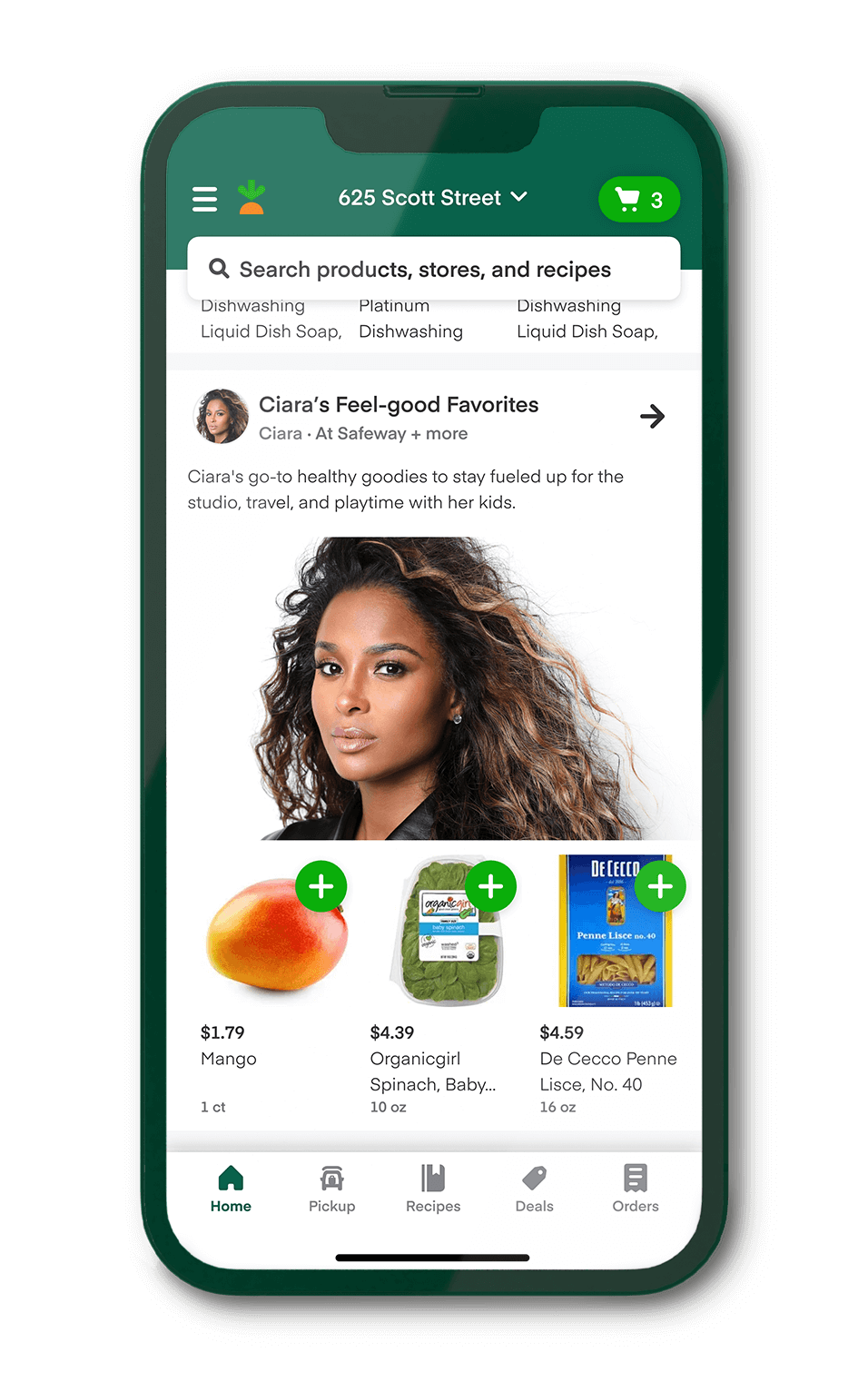
New Health Information with Health Tags: Information is power, especially when you’re trying to make healthier choices. With Health Tags, customers can now view up to 23 item-level labels while they shop. Whether you’re interested in low-salt or low-sugar products, following the Keto diet, or managing a gluten sensitivity, across Instacart you’ll now find reliable information about the products you’re shopping across more than 500,000 items in our catalog. For example, I have the unfortunate distinction of being a Frenchwoman with a gluten allergy, and our new Health Tags make it easier for me to find new gluten-free options.
Expanding our Healthy Recipe Library: Over the past few years, Instacart has partnered with a growing slate of top publishers like Dotdash Meredith and Hearst Magazines to create a library of 3,000+ recipes from beloved Dotdash Meredith titles like EatingWell, Parents, and Allrecipes and Hearst titles like Delish that customers can shop with a single tap. Today, we’re pleased to announce that we’re expanding our library of healthy recipes and our partnership with Hearst Magazines by adding a robust collection of new recipes from their lifestyle, health and wellness brands, including Women’s Health, Men’s Health and Prevention magazines. We’re also partnering with Found, the largest weight care clinic in the United States focused on personalized behavior change and biology, to make their expert-developed nutrition guidance and recipes shoppable via Instacart. They will be adding Instacart’s Shoppable Recipes button to their recipe pages, enabling their members to easily start an Instacart order based on recipes in their nutrition plan.
Driving Discovery with Digital Pop-Ups: Starting today, consumers will begin to see even more health inspiration via new Pop-Ups in the Instacart App. Pop-Ups are featured sections on the home feed of the app that serve up digital aisles full of inspiration. For example, in the coming weeks consumers will see a Vegan Favorites Pop-Up featuring a range of vegan ingredients, snacks, and desserts. Consumers will also see a Low Sodium Lifestyle Pop-Up which will include sodium-free staples and low sodium snacks and desserts.
Food as Medicine: Modern Tools for Personalized Health & Collaborative Care
The third area we care deeply about is about giving healthcare providers and their patients new tools to promote health, because we believe that food can play a major role in preventative care by helping to keep people healthier and reduce health care costs down the road. We’re committed to building technology and supporting technology platforms that can help organizations scale their food prescription and nutrition incentive programs, reach more people, and make it easier for patients to get the nutrition they need with the convenience of same-day delivery to their home. Here’s how:
Promoting Healthy Choices with Fresh Funds: There is enormous public health potential in food as medicine programs — including food prescriptions — which allow providers to write individually tailored food recommendations for patients. Research has shown a connection between medically tailored meals and decreased hospital admissions and health expenditures (6,7). Meanwhile, produce and food prescription programs positively impact health outcomes including glycemic control, HIV, and hypertension (8,9,10). In the coming weeks we’ll be launching Fresh Funds pilots with a range of public and private sector organizations to enable them to further scale and deepen their food prescription programs.
Enhancing Collaborative Care with Care Carts: We’re also announcing a new product called Care Carts, designed to give healthcare providers and caregivers the ability to order groceries on behalf of someone else. Whether you’re a healthcare provider who needs to deliver groceries and medical supplies to patients post-hospital discharge, you’re a clinician who wants to deliver groceries for a patient’s prescribed meal plan, or you’re a caregiver who wants to send groceries to a friend or family member from afar, Care Carts is a new way to send groceries to others.
A variety of organizations and services are now using Care Carts in new and innovative ways to expand their offerings to their clients, including digital nutrition platform Good Measures in partnership with WellCare of Kentucky; hospital-at-home solution provider Medically Home; food solutions and care management platform NourishedRx in partnership with a number of health plans; and digital nutrition services Season Health and Foodsmart.
Taking Steps to Modernize Medicaid Benefits: For many low-income people who rely on Medicaid, programs that address barriers to health – including time and transportation – can make a big difference in health outcomes. Used separately or in combination, Fresh Funds, Care Carts, and shoppable Lists help remove these barriers to health.
Notably, Care Carts is enabling Instacart, Good Measures and WellCare of Kentucky to together take steps to enhance Medicaid benefits and make it easier and more convenient for clients to follow a prescribed nutrition plan. In the coming weeks, WellCare of Kentucky will begin offering its Medicaid members who have been screened for high blood pressure the option to participate in Good Measures’ Good Food Prescription program. A Good Measures registered dietitian will work with participants to personalize a nutrition plan for them, and will have access to Instacart’s Care Carts to deliver the groceries in the plan directly to the client.
We see incredible potential in partnerships like this that span healthcare, nutrition coaching and grocery delivery to address the needs of low income communities – and are excited to continue expanding this work.
Enabling Shoppable Lists for Dietitians: We’re expanding how we use existing Instacart features like shoppable Lists that enable nutritionists and dietitians to offer their clients personalized and collaborative nutrition plans. These products are designed to help nutrition professionals create immediately actionable and convenient plans for their clients: instead of leaving the appointment with a printout of a recommended diet, patients can get a specific list of items through Instacart, and get that delivered in one tap, all while helping dietitians run their business more efficiently.
Instacart Health Policy Agenda: Advocating for Real and Lasting Change
In addition to developing new products and forming new partnerships, we also want to reach outside our organization and partner to help advocate for real and lasting change. We’re pleased to unveil the Instacart Health Policy Agenda, which outlines our top three policy priorities to help expand access to healthy food and address nutrition insecurity. We’re committed to working with policymakers, researchers, nonprofit leaders, private sector partners, and other stakeholders to help shape and enact policies at the federal, state and local level that:
Modernize food assistance programs to increase equitable access to nutritious food
Increase the availability of affordable, nutritious food in underserved urban and rural areas
Provide equitable access to health-tailored groceries and food prescription programs
Further, with one of the world’s largest online grocery catalogs and a birds-eye view of consumer buying trends, we also believe we have a significant opportunity to lead and support groundbreaking research to better understand the impact of online grocery on food access, affordability, nutrition and health. For example, today Instacart, No Kid Hungry and the University of Kentucky published a new study examining the impact of online grocery for SNAP and non-SNAP households in rural and urban areas. We intend to continue pioneering cutting-edge research on food access gaps for food-insecure populations, racial nutrition disparities, and barriers to how people buy their groceries and feed their families.
We look forward to inviting government leaders and every member of the Instacart community—from shoppers to customers to employees—to join us as we pursue this work together.
###
Sources
1 USDA. “Food Security: Key Statistics & Graphics.” April 22, 2022. https://www.ers.usda.gov/topics/food-nutrition-assistance/food-security-in-the-u-s/key-statistics-graphics/#:~:text=The%20prevalence%20of%20food%20insecurity%20was%20unchanged%20from%202019%20to,to%2010.5%20percent%20in%202019.
2 The Washington Post. “Millions are suffering from diet-related diseases. What number will make us pay attention?” November 2021. https://www.washingtonpost.com/local/healthy-eating-obesity-diabetes-heart-diseases/2021/11/30/3b4e2cfc-51fe-11ec-9267-17ae3bde2f26_story.html
3 USDA. “USDA Actions on Nutrition Security.” July 2022. https://www.usda.gov/sites/default/files/documents/usda-actions-nutrition-security-infographic.pdf
4 The Washington Post, “The Real Reason the U.S. Spends Twice as Much on Health Care as Other Wealthy Countries.” March 2018. https://www.washingtonpost.com/news/wonk/wp/2018/03/13/the-real-reason-the-u-s-spends-twice-as-much-on-health-care-as-other-wealthy-countries/
5 Food and Agriculture Organization of the United Nations. “The State of Food Security and Nutrition in the World 2022.” June 2022. https://www.fao.org/publications/sofi/2022/en/
6 JAMA Network. “Association Between Receipt of a Medically Tailored Meal Program and Health Care Use” April 2019. https://jamanetwork.com/journals/jamainternalmedicine/fullarticle/2730768
7 Health Affairs. “Meal Delivery Programs Reduce The Use Of Costly Health Care In Dually Eligible Medicare And Medicaid Beneficiaries.” April 2018. https://www.healthaffairs.org/doi/10.1377/hlthaff.2017.0999
8 National Library of Medicine. “A Pilot Food Bank Intervention Featuring Diabetes-Appropriate Food Improved Glycemic Control Among Clients In Three States.” November 2015. https://pubmed.ncbi.nlm.nih.gov/26526255/
9 National Library of Medicine. “Comprehensive and Medically Appropriate Food Support Is Associated with Improved HIV and Diabetes Health.” February 2017. https://www.ncbi.nlm.nih.gov/pmc/articles/PMC5359179/
10 National Library of Medicine. “Dietary Impact of Produce Prescriptions for Patients With Hypertension.” November 2018. https://pubmed.ncbi.nlm.nih.gov/30447106/
Most Recent in Company Updates
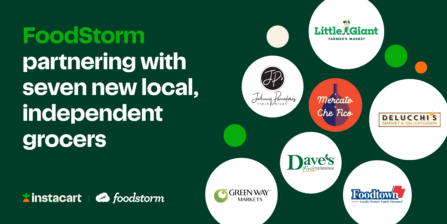
FoodStorm
Helping Local Independent Grocers Streamline Their Catering and Prepared Foods Businesses
Over the past few years, FoodStorm - our order management system (OMS) designed specifically to help grocers manage their deli, prepared foods and catering - has seen remarkable growth. And today, we’re excited to share…...
Apr 24, 2024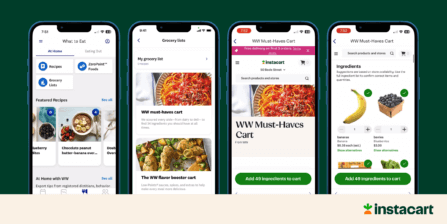
Company Updates
Making Nutritious & Delicious Choices Easier with Instacart and WeightWatchers
New WeightWatchers integration with Instacart unlocks ability to browse ‘Points’-friendly recipes, shop for ingredients, and get everything delivered to your door - now live in the WeightWatchers app In the hustle of everyday life, making…...
Apr 17, 2024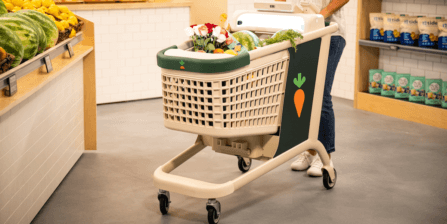
Caper
Why Smart Carts Are the Winning Technology Format for Grocers
One of the most common misconceptions about smart carts is that they only serve as an alternative to self-checkout. However, the real magic behind a Caper Cart, our AI-powered smart cart, is the digital screen.…...
Apr 9, 2024

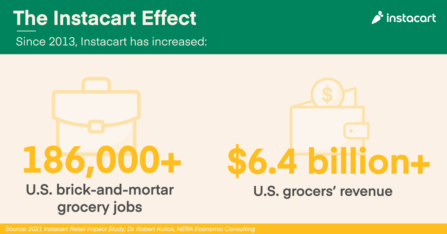 Instacart’s Impact on America’s Grocery Industry, by the Numbers
Instacart’s Impact on America’s Grocery Industry, by the Numbers 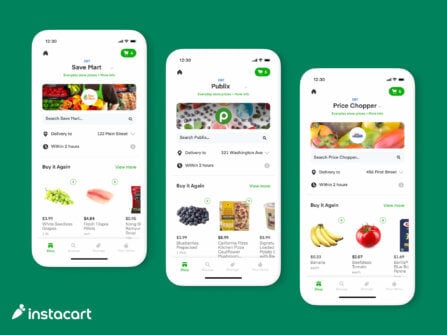 Breaking Down Barriers to Food Access with EBT SNAP Expansion
Breaking Down Barriers to Food Access with EBT SNAP Expansion  Beyond the Cart: A Year of Essential Stories
Beyond the Cart: A Year of Essential Stories 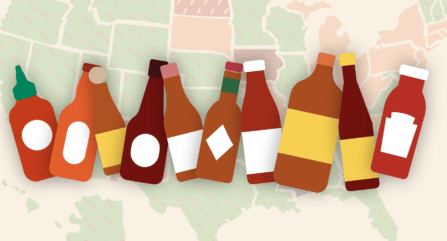 A Hot Take on America’s Favorite Hot Sauces 🌶
A Hot Take on America’s Favorite Hot Sauces 🌶  JuJu Smith-Schuster: What’s in my Cart?
JuJu Smith-Schuster: What’s in my Cart? 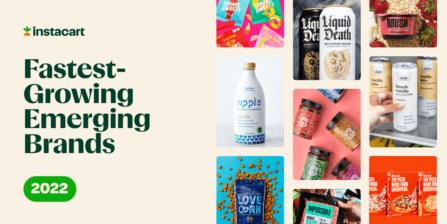 Introducing the First-Ever Instacart Emerging Brand List
Introducing the First-Ever Instacart Emerging Brand List 
